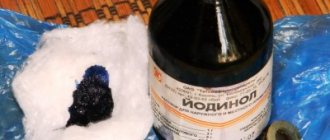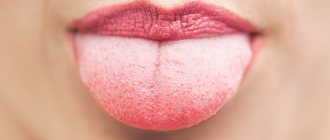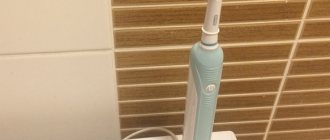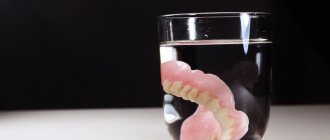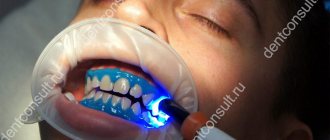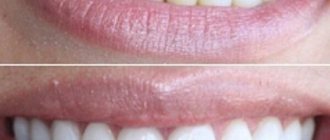Dear friends, hello!
Today, at your request, we will compare two antiseptics: Chlorhexidine and Miramistin.
We will read the instructions of both remedies and find out what their differences are, when it is better to offer Chlorhexidine, and when Miramistin.
I'll also jot down a list of customer requests for which you can offer them.
Go!
Active ingredients
Sometimes I hear that they are one and the same.
It’s not just pharmacy employees who visit the blog, so I tell everyone:
No, they have different active ingredients.
In Chlorhexidine, the active substance is called "chlorhexidine bigluconate".
Already from the name it is clear that the composition contains chlorine.
Let us remember bleach and chloramine, which have long been used for disinfection, since they mercilessly deal with microbial cells.
Chlorhexidine is from the same opera. I mean, it's just as strong an antiseptic.
It was synthesized in Great Britain in 1950, and then, having demonstrated its antimicrobial properties in clinical studies, it spread to different countries and continents.
Miramistin. The active ingredient sounds quite simple: benzyldimethyl (3-(myristoylamino) propyl) ammonium chloride monohydrate.
Its history dates back to the 70s of the last century in the USSR.
It was originally conceived for astronauts. Already during the first space flights, alarming news began to arrive from orbit: in the cabins of ships, it was not apple and pear trees that bloomed lushly, but colonies of bacteria and fungi.
This was predisposed to a confined space, a constant temperature of 22-23 degrees and microorganisms that normally live on the skin and hair of astronauts. And those antiseptics with which they were supplied on their journey turned out to be powerless.
Therefore, it was necessary to develop a drug that would act on bacteria, including antibiotic-resistant viruses, and fungi.
Preclinical trials took 10 long years.
And then hard times came for the country. Funding for many promising projects has ceased.
The new antiseptic might never have been published if it had not been for the Olympics in Moscow. It was expected that thousands of foreigners would come to the capital, and the USSR Ministry of Health was worried that there would be a surge in sexually transmitted diseases in a country where “there was no sex.”
Then the Minister of Health received information on Chlorhexidine and, just in case, on Miramistin (it was called differently in those years), which in studies showed itself to be unique in many respects.
The Minister of Health was impressed by the properties of the new antiseptic, and work on it continued.
In 1993, the first batch of the drug was released.
So if Chlorhexidine was originally a foreign creation, Miramistin is ours, ours.
Effective in protecting against viruses
Viruses cannot penetrate the dense cell membrane of our body. Infection occurs only if microtraumas are present, which serve as some open gates for viral infection. Miramistin as a medicine can not only fight it, but acts as an auxiliary substance, supporting local immunity. The same applies to coronavirus in particular. When combined with antiviral drugs, Miramistin has a positive effect on the body.
Chlorhexidine can be used as a disinfectant: wash your hands, rinse your nose and throat after visiting the street or contacting sick people.
In the context of the spread of coronavirus infection, try to monitor your personal hygiene more often, wash your hands with antibacterial soap, and if this is not possible, use hand and skin antiseptics.
How do Chlorhexidine and Miramistin work?
Chlorhexidine:
Damages the cell membrane of the microbial cell, increases its permeability. The substances necessary for its existence leak and it dies.
- At a concentration of less than 0.01% it has a bacteriostatic effect, i.e. suppresses the growth of bacteria.
- At a concentration of more than 0.01%, it destroys microbes and complex viruses (has a bactericidal and virucidal effect).
- At a concentration above 0.05% it destroys pathogenic fungi.
Conclusion: the 0.05 and 0.5% solutions of Chlorhexidine available in pharmacies are effective against various pathogens.
BUT: Chlorhexidine may cause irritation to the skin and mucous membranes. It sometimes causes chemical burns (mainly mucous membranes).
Miramistin:
- Has a bactericidal effect. The mechanism is similar to Chlorhexidine.
- Activates regeneration (healing) processes.
- Has hyperosmolar activity. This means that it attracts inflammatory exudate, which reduces inflammation in and around the wound.
- Sorbs (absorbs) purulent exudate. A dry crust forms faster. It protects the wound from germs and dirt.
Does not damage living skin cells. Does not cause chemical burns.
Conclusion: Miramistin has a milder effect than Chlorhexidine and is safer.
What do miramistin and chlorhexidine have in common?
The main general directions of drugs can be called the following positions:
- the ability to destroy pathogenic microflora at different levels, affecting the bacterial cell membrane itself, therefore, the mechanism of action of the agents in question is the same;
- the scope of application allows the use of miramistin and chlorhexidine in many areas of medicine;
- both drugs belong to the class of antiseptics that have an antibacterial effect;
- with long-term use, bacteria do not develop resistance;
- do not lose their effectiveness when treating affected areas with the presence of blood, pus and ichor.
Who do they act on?
Chlorhexidine
Targets for him:
- various microorganisms, including staphylococci, streptococci, chlamydia, ureaplasma, pathogens of syphilis, gonorrhea.
- mushrooms – the types are not specified in the instructions.
- viruses covered with an additional shell. They are also called “complex” or “complexly organized”.
Simple viruses consist of DNA or RNA (i.e., a molecule that stores genetic information) and a protective protein shell (capsid) surrounding it.
Complex viruses have an additional shell consisting of lipoproteins. This is what Chlorhexidine destroys, causing the death of the virus.
Examples of complex viruses: herpes simplex virus, human immunodeficiency virus (HIV).
Most of the viruses that cause ARVI are simple, so gargling with Chlorhexidine in the first days of ARVI does not make sense.
- Protozoa. For example, Trichomonas are the causative agents of trichomoniasis.
Miramistin
It acts on the same pathogens as Chlorhexidine.
In addition:
- active against hospital strains. These are types of microbes that have adapted to life in a hospital environment. They are not taken by standard antibiotics because they have mutated and acquired special properties. Most often these are Staphylococcus aureus, Streptococcus, Escherichia coli, Proteus, Klebsiella, Pseudomonas aeruginosa, etc. It is these microbes that are often responsible for the development of severe purulent processes in weakened patients who have been in the hospital for a long time.
- active against yeast fungi, dermatophytes (the main causative agents of mycosis of the feet), ascomycetes (a type of mold fungi). It even works on those mushrooms that have become resistant to antifungal agents.
On the Internet I came across Miramistin ointment, which is indicated, among other things, for the treatment of mycoses of the feet. But I didn’t find it in Russian pharmacies. Or is there?
Conclusion:
The spectrum of action of Miramistin is higher.
Comparative characteristics of miramistin and chlorhexidine
Miramistin or chlorhexidine, what are their similarities and differences?
If we consider the scope of application, then there are no practically significant differences, because the list of medical areas is the same. Due to the fact that the structure of the drugs is different, you can notice a slight discrepancy in the purpose (indications).
The activity of chlorhexidine is slightly lower; unlike Miramistin, it is not sensitive to Koch's bacillus (tubin infection), Pseudomonas aeruginosa, and some Proteas. These pathogenic microorganisms require only potent antibacterial agents.
Miramistin can suppress them, but, as practice shows, it is better to fight dangerous infections in a comprehensive manner. For example, for tuberculosis, up to 4–5 antibacterial agents are used simultaneously, and for a long period.
Chlorhexidine is not able to destroy bacterial spores. According to statistics, chlorhexidine is no longer used for treatment, but as a disinfectant in medicine. It should be noted that chlorhexidine is a fairly popular drug in veterinary medicine.
Chlorhexidine is not used in ophthalmology, because there is a danger of developing a burn of the conjunctiva. You cannot use iodine and chlorhexidine at the same time. The restriction for prescribing the drug is children under 12 years of age.
According to research, it has been determined that Miramistin has a great effect against pathogenic microflora. It covers a huge spectrum of bacteria, so it is effective against various infections. This includes streptoderma, trophic ulcers, candidiasis, chlamydia and others.
Miramistin acts gently and does not cause burns, so it is often prescribed for gargling. If for some reason Miramistin is not suitable, it can also be replaced with chlorhexidine. The peculiarity of Miramistin is its ability to destroy dangerous strains of bacteria that are resistant to antibiotics.
There is information that miramistin reduces the effect of antibiotics, and their combined use remains a controversial issue. Miramistin is also more active against viruses and fungi, especially in immunodeficiency states. Mycoses of various etiologies respond better to Miramistin.
When are Chlorhexidine and Miramistin used?
Chlorhexidine:
- Prevention of sexually transmitted diseases: syphilis, gonorrhea, trichomoniasis, chlamydia, herpes, HIV, etc.
- Disinfection of hands, instruments, surgical field.
- Prevention of suppuration of abrasions and wounds.
- Festering wounds.
- Burns – to prevent infection.
- Oral diseases: gingivitis, stomatitis, periodontitis, etc.
- Prevention of infection after dental operations (for example, tooth extraction) and manipulations.
- In gynecology, Chlorhexidine irrigation is used to prevent postpartum infection.
- In urology - in the complex treatment of urethritis (inflammation of the urethra).
- Prevention of fungal infection after visiting baths, saunas, swimming pools.
- Treating shoes to prevent re-infection during the treatment of mycoses of the feet.
- Disinfection of the injection site in the absence of alcohol or alcohol wipes.
Miramistin:
The price of Miramistin is significantly higher, so, as a rule, it is NOT used to disinfect hands, instruments, shoes, or to prevent fungal infections after visiting public places where you can pick up a fungus.
The rest of the readings are the same.
Additionally:
- Complex treatment of otitis (drip into the ear, put turundas), sinusitis (during puncture, the maxillary sinuses are washed).
- If necessary, it can be dropped into the eyes: conjunctivitis, eye injury, burn. There are even eye drops containing Miramistin in the same concentration as the solution for external use. They are called Okomistin.
Conclusion:
Chlorhexidine in solution has a wider range of applications as a PREVENTIVE agent, and Miramistin - as a MEDICINE.
The drug Miramistin
The drug is also active against VIL and herpes
The history of the development of antiseptics is very interesting, it concerns space.
Back in Soviet times, work was carried out to create a drug that would act in confined space conditions, where a favorable environment was formed for the proliferation of microbes.
The active ingredients of Miramistin were tested on board the ship, but innovative developments at that time ended up “on the shelf” for some reason.
Relatively recently they were remembered, which formed the basis of modern antiseptics.
The chemical formula of the drug is benzyldimethyl [3-(myristoylamino) propyl] ammonium chloride monohydrate, this is the active ingredient. For better absorption, the active component is supplemented only with purified water.
The action of the antiseptic extends to many types of bacteria, including:
- streptococci, staphylococci;
- anaerobic/aerobic infections;
- ascomycetes;
- chlamydia;
- Trichomonas;
- gonococcus;
- Treponema;
- yeast, etc.
The drug is also active against VIL and herpes. When treating a wound, Miramistin prevents the absorption of ulcers into the blood, the wound dries out, and tissue regeneration is stimulated.
Directions for use:
- flushing the maxillary sinus for sinusitis;
- gargling, as well as irrigation by spraying for diseases of the larynx, for treatment you need to press the dispenser 3-4 times, repeat procedures at intervals of 4 hours (10 ml of liquid is required for one rinse);
- when treating tonsillitis and pharyngitis in children, irrigation is carried out (3-5 ml per treatment);
- for stomatitis, gingivitis, periodontitis, mouth rinse with 10-15 ml of the drug is prescribed, 3-4 times a day;
- treatment of wounds and burns by application, irrigation, also placing tampons moistened with the drug (repeat the treatment procedure 2-3 times a day for 3-5 days);
- to prevent infections after childbirth, vaginal irrigation is carried out (before birth - 5-7 days, during childbirth - after each examination, after childbirth - 50 ml of the product for 5 days);
- in order to prevent sexually transmitted diseases, the drug is used no later than 2 hours after intimacy (men 2-3 ml in the urethra, women 1-2 ml in the vagina);
- for complex therapy of urethritis/urethroprostatitis, it is injected into the urethra (2-3 ml of the drug 1-2 times a day, course – 10 days).
The mechanism of action of the antiseptic lies in the ability of the active component to destroy the outer cell membrane of microorganisms, as a result of which their integrity is impaired and they die.
Systemic effects
Chlorhexidine
When applied topically the aqueous solution is not absorbed into the bloodstream and does not have a systemic effect. In case of accidental entry into the stomach, it is not absorbed.
BUT: nevertheless, the manufacturer warns:
In case of accidental ingestion of the solution, perform a gastric lavage and give a sorbent.
Apparently, this is why in the instructions for Chlorhexidine we do NOT see a clear recommendation to use it for sore throat and tonsillitis. Not everyone knows how to gargle correctly. This is especially true for children. They can easily swallow it.
The alcohol solution is partially absorbed through the skin and can cause depression of the central nervous system.
Special instructions:
If any Chlorhexidine solution accidentally gets into your eyes, rinse them quickly and thoroughly with water.
Avoid contact with the inner ear. This could be the case, for example, with perforated otitis media. Therefore, Chlorhexidine is not dripped into the ear.
Miramistin
When applied topically, it is not absorbed through the skin and mucous membranes.
Accidental ingestion does not pose a health hazard. The drug will come out naturally.
Conclusion:
Miramistin is safer.
Cost comparison - which is cheaper
The price of chlorhexidine is an advantage of this drug.
Let's take a short review of the prices for miramistin and chlorhexidine in Russian pharmacies and compare the average cost of these solutions. It should be noted that Miramistin has different attachments, so the price also fluctuates due to this parameter.
- Depending on the amount of Miramistin 0.01% (50, 150 or 500 ml), the price ranges from 200 to 800 rubles. Some online pharmacies offer Miramistin at significant discounts, so try to do a little monitoring before purchasing.
- The price of chlorhexidine 0.05% today is simply ridiculous - 10 rubles per 100 ml of solution. Suppositories for the treatment of gynecological infections (vaginal) cost about 150 rubles for 10 suppositories.
Side effects of Chlorhexidine and Miramistin
Chlorhexidine
- Allergic reaction.
- Dry skin.
- Skin itching.
- Dermatitis.
- Photosensitivity, i.e. the appearance of a rash on the skin after exposure to the sun.
- The appearance of brown spots on the teeth after frequent rinsing of the mouth.
- Tartar deposits.
- Taste disturbance.
Important: In February 2021, the FDA issued a notice warning that cases of anaphylactic shock have been reported with the use of Chlorhexidine-based products. Therefore, when selling Chlorhexidine, find out whether the buyer is prone to allergies.
Miramistin
- A slight burning sensation (passes in a few seconds).
- Allergic reaction.
Conclusion: Miramistin produces fewer adverse reactions and is better tolerated.
Effect on the skin
Hypersensitivity to miramistin is extremely rare. The drug has a gentle effect on the skin. However, allergic reactions have been reported. Chlorhexidine is more “caustic”. Allergic reactions and hypersensitivity are more common, and burning and itching are also observed. With regular use or use of chlorhexidine in high concentrations, dermatitis, an inflammation of the skin, may occur.
Contraindications
Chlorhexidine:
- Increased sensitivity.
- Dermatitis.
Carefully:
- Children.
- Pregnant women.
- Nursing.
Miramistin
- Individual intolerance.
As for children, the drug’s website contains recommendations for using Miramistin from birth for diaper rash, the appearance of pustules on the skin, as well as for the treatment of stomatitis, pharyngitis, tonsillitis, tonsillitis, for the treatment of wounds, abrasions, and insect bites.
Important: do not put it in the throat of children under 3 years old to avoid laryngospasm!
Nothing is said about pregnant and lactating women, but given that the drug is not absorbed through the skin and mucous membranes and does not have a systemic effect, it can be used during pregnancy and lactation.
Conclusion:
Miramistin has a wider target audience.
Is it possible to use Chlorhexidine instead of Miramistin?
Chlorhexidine, according to statistics in medicine, is used mainly for disinfecting instruments and various surfaces
It is not advisable to use Chlorhexidine instead of Miramistin.
In most cases, the substitute simply turns out to be ineffective or provokes skin irritation, burns and other allergic manifestations.
The narrow spectrum of action makes the antiseptic powerless against a whole group of bacteria to which its action does not apply.
In addition, there is an opinion that it is undesirable to use chlorhexidine during pregnancy and lactation; in high concentrations the substance can cause harm to the fetus.
As for the possibility of a reverse replacement (replacing Chlorhexidine with Miramistin), this option looks more advantageous.
The only question that arises is the rationality of the replacement. If you use an antiseptic to disinfect surfaces, shoes and other devices, you will have to spend significantly more money, and all this, of course, is not justified.
Chlorhexidine, according to statistics in medicine, is used primarily for disinfecting instruments and various surfaces. It is given a modest place in the treatment process.
Grand total
The main advantages of Chlorhexidine over Miramistin:
- Low price.
- The presence of solutions of different concentrations, which allows you to choose the optimal one for each specific situation.
- Wider range of application as a PREVENTIVE agent.
Minuses
- Lots of side effects.
- Children, pregnant women and nursing mothers - with caution.
- Bitter taste.
- Most release forms do not have a nozzle - it is inconvenient to use.
The main advantages of Miramistin over Chlorhexidine:
- Wider spectrum of action.
- More indications as a MEDICAL agent.
- Suitable for children from birth, pregnant women and nursing mothers.
- Neutral in taste.
- Few side effects.
- As a rule, a convenient nozzle is included.
Minuses:
- High price.
- Does not meet the requirements of evidence-based medicine.
Release forms. When that?
Chlorhexidine
A 0.5% aqueous solution is suitable for purulent wounds, bedsores, and trophic ulcers.
a 0.5% alcohol solution for disinfecting hands if people, for example, go on a trip, to disinfect instruments and injection sites.
In all other cases - 0.05% aqueous solution.
Miramistin
With a gynecological attachment - for the treatment and prevention of vulvitis, vulvovaginitis, when there is itching, discomfort in the vagina, discharge from the genital tract.
Miramistin with a urological applicator complete with a spray nozzle is especially suitable for a male traveler or who frequently goes on business trips.
Miramistin with a spray nozzle is convenient for irrigating the throat, nose, mouth, treating wounds, and skin.
Miramistin in a 500 ml package is the optimal form of release for treating wounds, burns, bedsores, and trophic ulcers that have a large area.
Chlorhexidine - main characteristics
Chlorhexidine digluconate is an active component of the drug that suppresses strains of many dangerous bacteria.
Chlorhexidine, in addition to streptococci and staphylococci, is active against herpes, fungi and some Proteus. During use of the drug, absorption into the systemic circulation does not occur, although some experts claim that it is possible.
The antimicrobial effect of chlorhexidine persists for a long time even in the presence of pathogenic discharge: ichor, pus and other liquids.
Chlorhexidine has different concentrations, which makes it possible to enhance the antiseptic effect. Low concentrations from 0.05 to 0.2% are used in otolaryngology, dentistry, traumatology, surgery, gynecology, and urology. These solutions are used to treat mucous membranes, wound surfaces, surgical fields, skin, etc.
A more concentrated solution (0.5%) can also be used in case of severe infection, when the lesion tends to expand, or the problem area covers large areas of the body, such as with burns. Chlorhexidine 0.5% is often used for the treatment of medical instruments.
A concentration of 2% can be used to disinfect burns, wounds, medical instruments, skin, instruments and special equipment.
There are also the highest concentrations of chlorhexidine - 5 and 20%, they are intended for the preparation of solutions based on alcohol, glycerin or water.
We recommend - instructions for using chlorhexidine for mouth rinse.
Customer requests when it is possible to offer an antiseptic solution
- I need some antiseptic for the road.
- Irritation after epilation.
- Skin irritation after shaving.
- Wet (water) callus. (Treat the needle and skin with an antiseptic, carefully pierce the callus, treat the skin again with an antiseptic).
- How to disinfect the ear after a piercing?
- How to disinfect the skin after piercing/tattoo?
- How can you treat a trophic ulcer? (Offer an antiseptic in combination with other products).
- How to treat bedsores? (Offer an antiseptic in combination with other products).
- How to treat shoes with fungus so as not to become infected again?
- I need something for foot fungus. (Suggest antifungal plus Chlorhexidine for shoe treatment and healthy foot skin).
- I go to the pool/sauna. Is there anything to protect yourself from fungus?
- Mouth ulcers. (Offer an antiseptic in combination with other agents. If a child has , Miramistin is preferred).
- The gums are inflamed. (Offer an antiseptic in combination with other products).
- White plaque in my mouth, I took an antibiotic. a child has oral candidiasis, use Miramistin. Do not spray small children in the mouth! Wrap a bandage around your finger, wet it with Miramistin and treat the mouth).
- The tooth was removed. How can you rinse your mouth? The doctor didn't prescribe anything.
- I need alcohol for injections. – (Suggest 0.5% alcohol solution of Chlorhexidine).
- I have a sore throat. I need something to gargle. Only cheaper. (Chlorhexidine).
What else? Add!
Analogs for children
Pediatricians recommend using Malavit to replace miramistin and chlorhexine.
This is a unique natural preparation that includes active bio-complexes of silver, copper, mumiyo and other natural substances. Malavit is prescribed in otolaryngology, gynecology, and dentistry. The product can also be used to treat affected areas of the skin (wounds, burns, bites, etc.).
Malavit has anti-inflammatory, antibacterial, decongestant, antipruritic and antifungal effects. The drug, according to official instructions, is used after the age of five. In practice, it is used earlier, after first reducing the concentration of the solution.
The drug “Dekasan” is also suitable as an analogue. It is capable of destroying bacterial and fungal microflora and preventing the proliferation of viral infections. The widest range of uses of dekasan is for diseases of the oral cavity.
They are often inhaled to treat infectious and inflammatory diseases of the throat (sore throat, tonsillitis, pharyngitis).
Also in children's practice, Lugol, chlorophyllipt (alcohol and oil solution), ingalipt, Gorlospas, faringosept and decatylene tablets, and other agents are often used.
